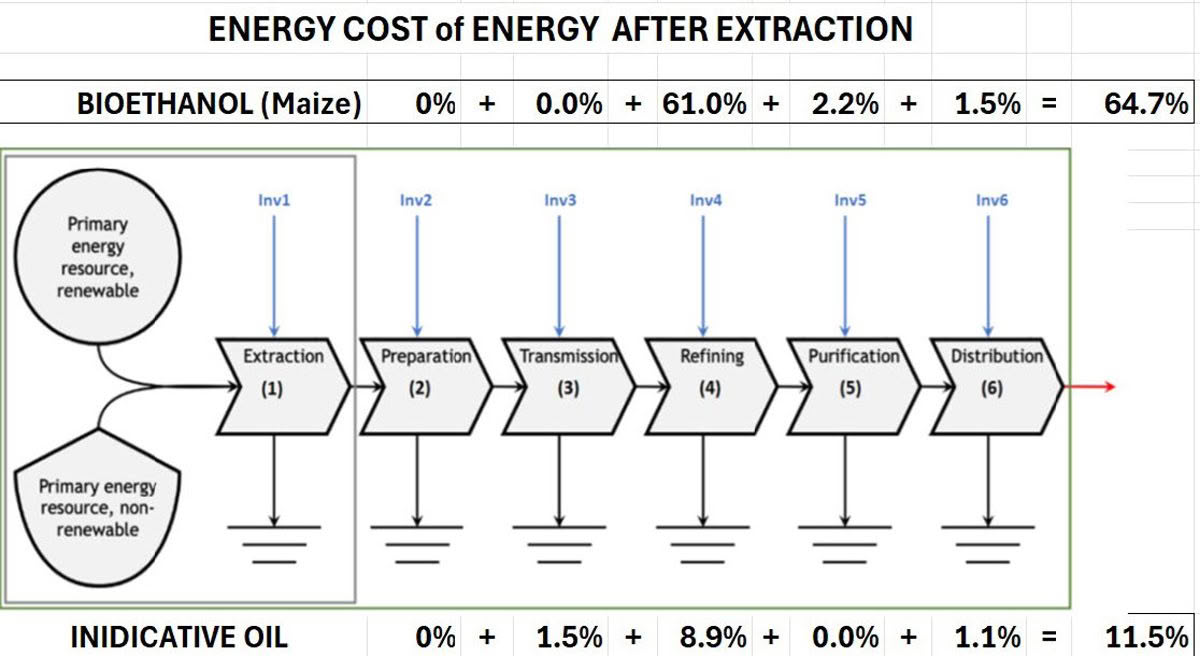What’s the energy cost of energy?

In the first of two articles, Lindsay Wood delves into the energy cost of energy.
We think of fuel efficiency as how far we drive on each litre of diesel, petrol, or whatever. But is the energy needed to get the energy to the bowser or EV charger in the first place a big deal or not?
After our last Clear the Air podcast segment, New Zealand Trucking editorial director Dave McCoid suggested I explore the supply chains of different energy sources. Maybe he knew his suggestion was aimed at the invisible elephant in the energy room because I glanced at it in the column Energy is Everything in the April 2024 issue.
The elephant goes under several names, and ‘energy cost of energy’, or ECoE, fits for today: the energy needed to get energy from wind or water or down the oil well to the wheels.
It’s important to track the process from the start right to the point of application, and that’s not as obvious as it might seem: values for oil are often given ’at the wellhead’, and early analysts were surprised to learn just how much downstream energy was needed for processing. “Estimates at the point of extraction,” highlights researcher David Murphy, “can be wildly misleading.” For example, the energy to access shale gas rises more than tenfold between extraction and point of use.

To defuse the huge variability of oil extraction, Murphy showed processing oil ‘beyond extraction’ typically consumes 11.5% of the original energy, and some bioethanol an incredible 64% (leaving only one-third for other uses, like using two-thirds of a tank of gas to get to the bowser and back.) Happily, some renewables fare better. The World Resources Institute compared growing the best biofuel crops on 1ha, with photovoltaics (PVs) on another hectare. At the point of use (delivering energy to the vehicle), PVs yielded some 100 times as much energy.
Factor in that EVs are some three times as energy-efficient as combustion engines, and PVs powering EVs can be an astonishing 300 times as energy-efficient as vegetation powering biofuel vehicles. It makes no sense to grow crops for biofuel. However, the equation changes for biofuel from waste (tallow or used cooking oil in New Zealand), and that could play a valuable, if small, part in a low-emissions future, especially in transitioning off fossil fuels.
Now, briefly, to get geekier: in economies like ours, centred on burning fossil fuels, we need an ECoE well below 10% to do the sort of stuff we like (good food and housing, well-functioning essential services, lots of lifestyle).
But Murphy tells us fossil fuels now have an overall ECoE averaging above 20%, so our energy system already struggles to support our society. That’s a big factor behind falling prosperity, weakening public services and struggling infrastructure.
Heard that discussed? Of course not – it’s the invisible elephant!
But the elephant has a silver lining. The more we electrify, from transport to milk treatment to home heating, the closer we get to an economy two or three times as energy-efficient as one based on combustion. Then, if we play our cards right, things might work better.
Next month, we’ll check that out further, plus some energy sources and real examples.
Read more
Scoping Scope 3
0 Comments4 Minutes


